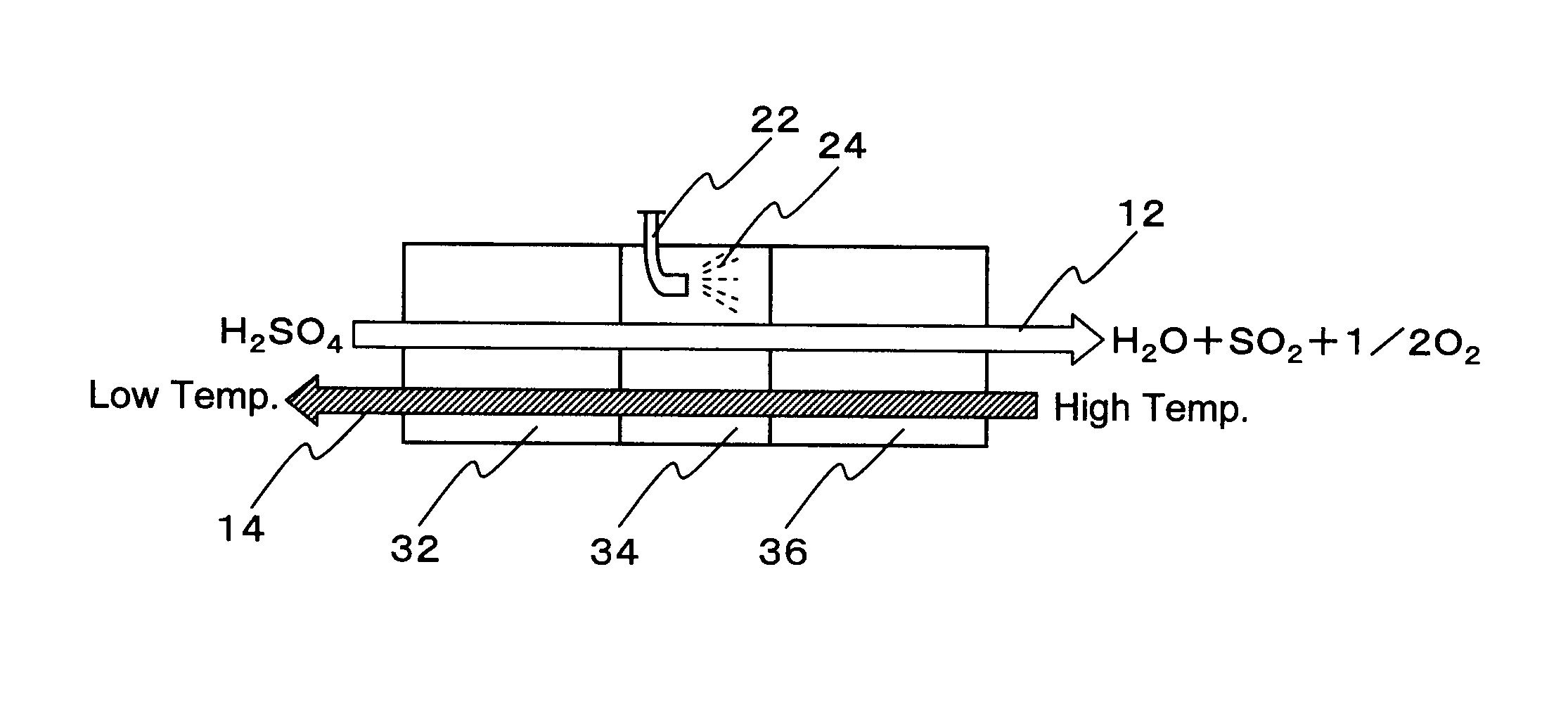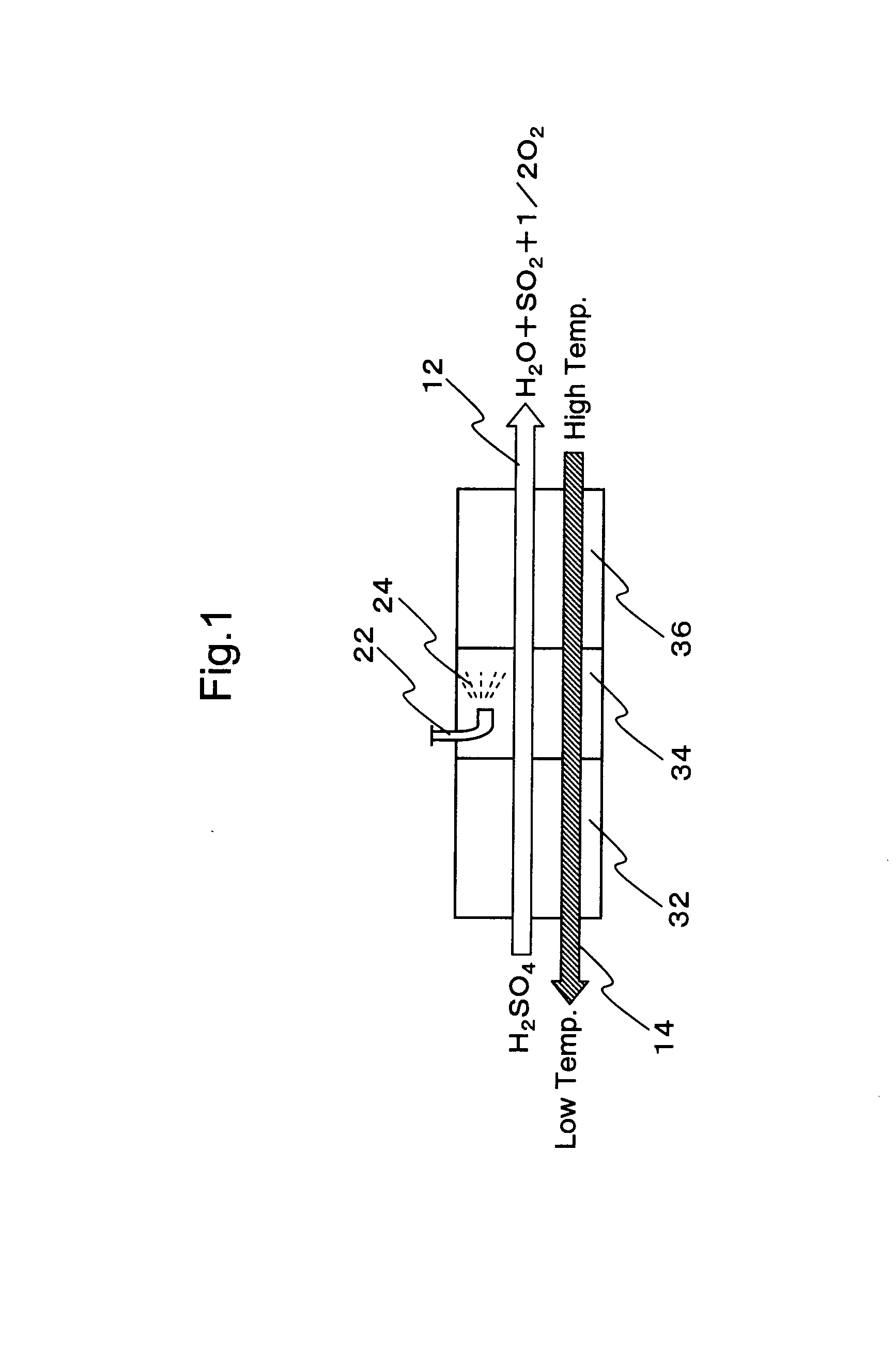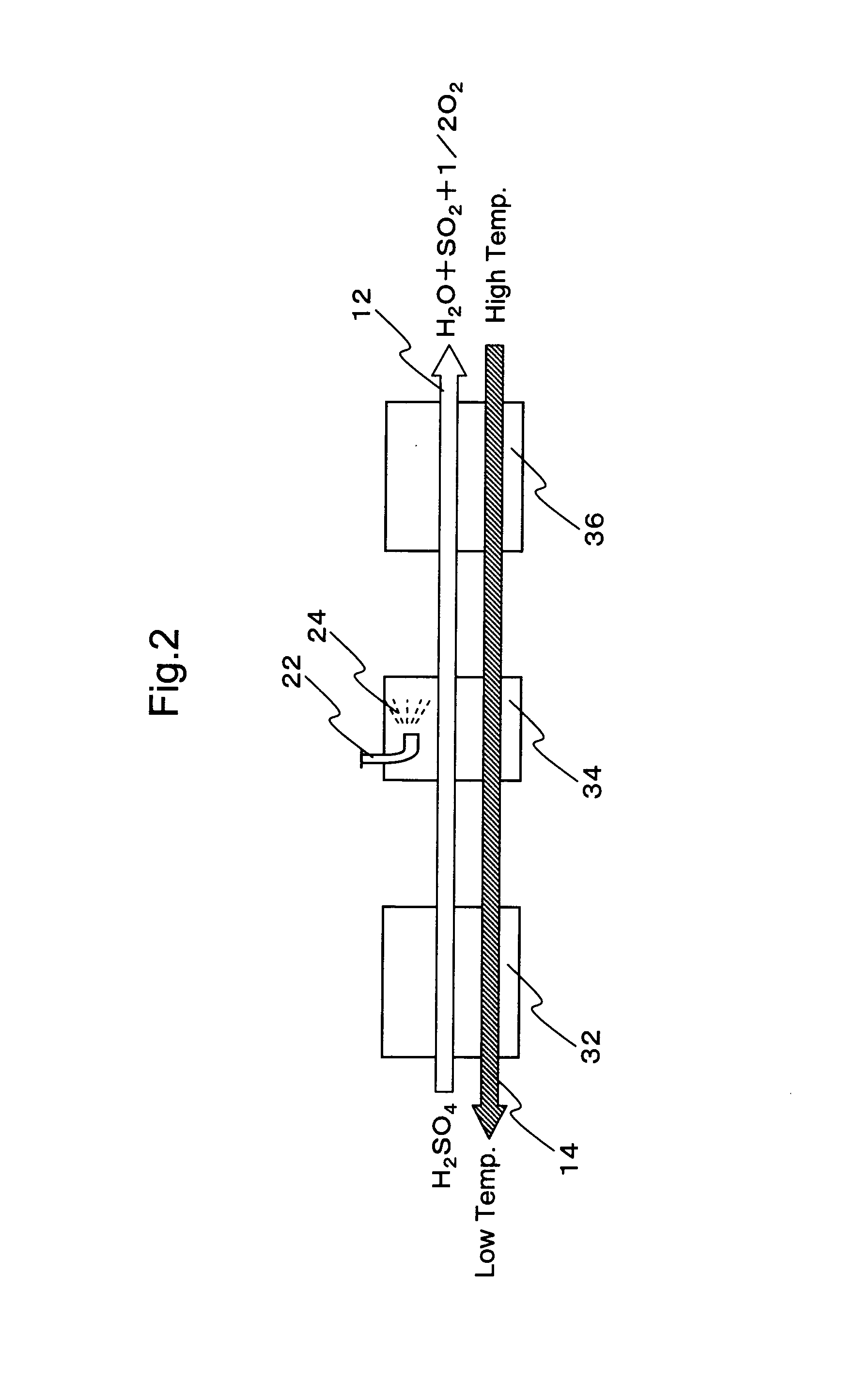Hydrogen production process
a hydrogen production and process technology, applied in the direction of hydrogen production, chemistry apparatus and processes, inorganic chemistry, etc., can solve the problems of high temperature required in this reaction, difficult industrial use, high cost of platinum catalyst, etc., and achieve good energy efficiency
- Summary
- Abstract
- Description
- Claims
- Application Information
AI Technical Summary
Benefits of technology
Problems solved by technology
Method used
Image
Examples
example 1
[0105]In this Example, a composite metal oxide (Cu—V—O) of copper (Cu) and vanadium (V) was used as the catalyst.
(Production of Unsupported Catalyst)
[0106]Copper oxide and vanadium oxide in an atom ratio of respective metals of 1:1 were ground in a mortar, the ground oxides were well-mixed, and the mixture was charged into an alumina-made crucible and fired at 750° C. over 12 hours, and thereby the unsupported catalyst used as the catalyst was obtained. FIG. 5(a) shows the X-ray diffraction analysis (XRD) results of the obtained unsupported catalyst.
(Production of Supported Catalyst)
[0107]A supported catalyst where a composite metal oxide is supported on a porous silica support having a pore structure was produced as follows.
(Production of Supported Catalyst—Production of Porous Silica Support)
[0108]The porous silica support for the supported catalyst was produced by the method similar to the method described in Japanese Unexamined Patent Publication No. 2008-12382. That is, the por...
example 2
[0115]In Example 2, a composite metal oxide (Cr—V—O) of chromium (Cr) and vanadium (V) was used as the catalyst. An unsupported catalyst was produced in the same procedure as in Example 1 except that the firing temperature was 700° C. in the production of the unsupported catalyst.
[0116]FIG. 5(b) shows the X-ray diffraction analysis (XRD) results of the obtained unsupported catalyst.
example 3
[0117]In Example 3, a composite metal oxide (Ce—V—O) of cerium (Ce) and vanadium (V) was used as the catalyst.
[0118]An unsupported catalyst and a supported catalyst were produced in the same procedure as in Example 1 except that the firing temperature was 700° C. in the production of the unsupported catalyst.
[0119]FIG. 6(a) shows the X-ray diffraction analysis (XRD) results of the obtained unsupported catalyst.
PUM
| Property | Measurement | Unit |
|---|---|---|
| temperature | aaaaa | aaaaa |
| temperature | aaaaa | aaaaa |
| energy | aaaaa | aaaaa |
Abstract
Description
Claims
Application Information
 Login to View More
Login to View More - R&D
- Intellectual Property
- Life Sciences
- Materials
- Tech Scout
- Unparalleled Data Quality
- Higher Quality Content
- 60% Fewer Hallucinations
Browse by: Latest US Patents, China's latest patents, Technical Efficacy Thesaurus, Application Domain, Technology Topic, Popular Technical Reports.
© 2025 PatSnap. All rights reserved.Legal|Privacy policy|Modern Slavery Act Transparency Statement|Sitemap|About US| Contact US: help@patsnap.com



